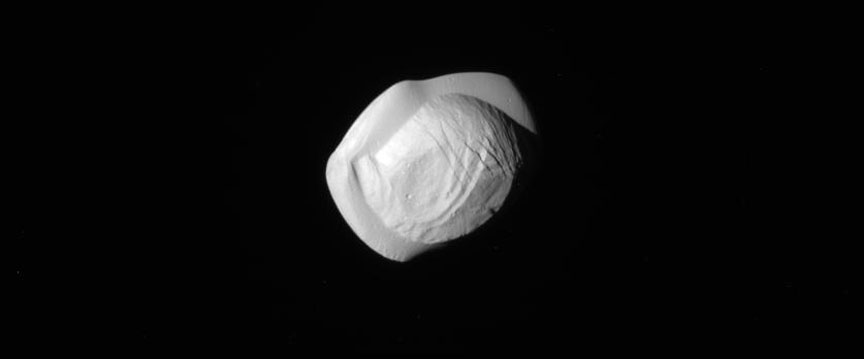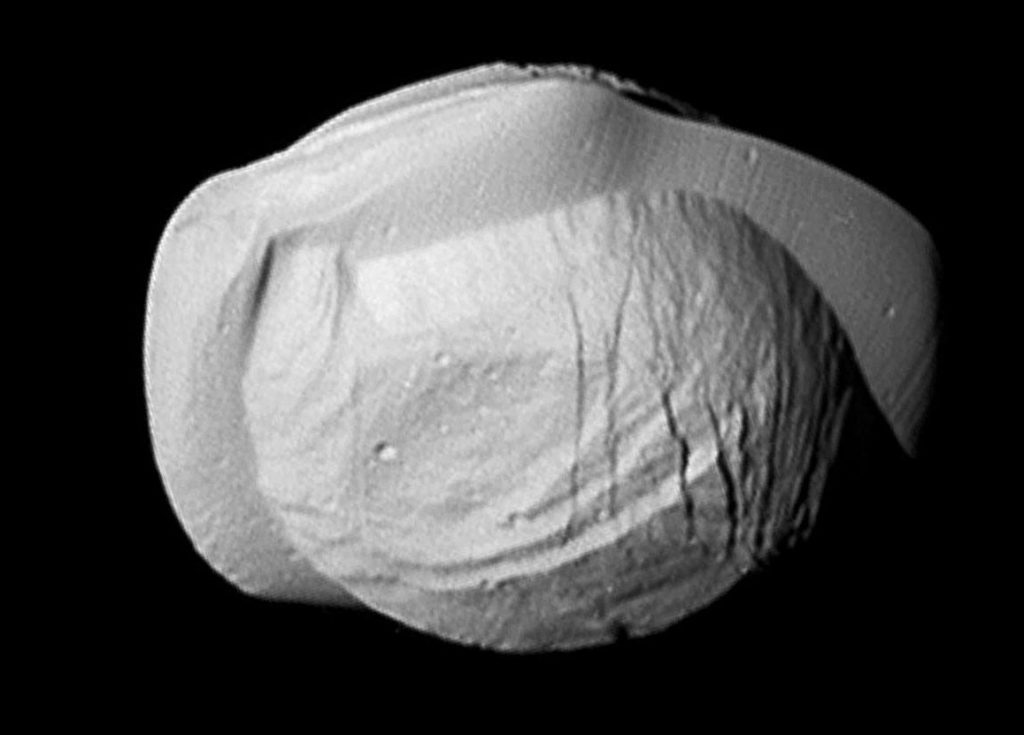
Besides Earth, Saturn may be the only other planet where you can order rings with a side of ravioli. Closeup photos taken by the Cassini probe of the the planet’s second-innermost moon, Pan, on March 7 reveal remarkable new details that have us grasping at food analogies in a feeble attempt to describe its unique appearance.
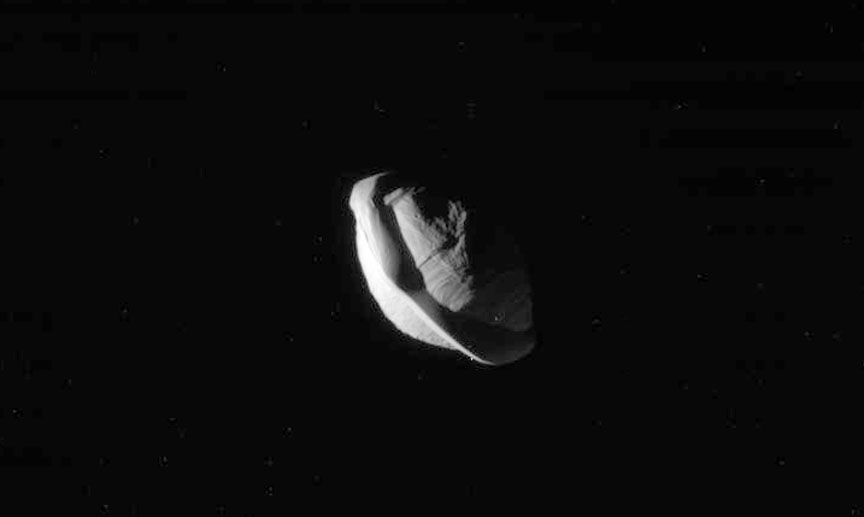
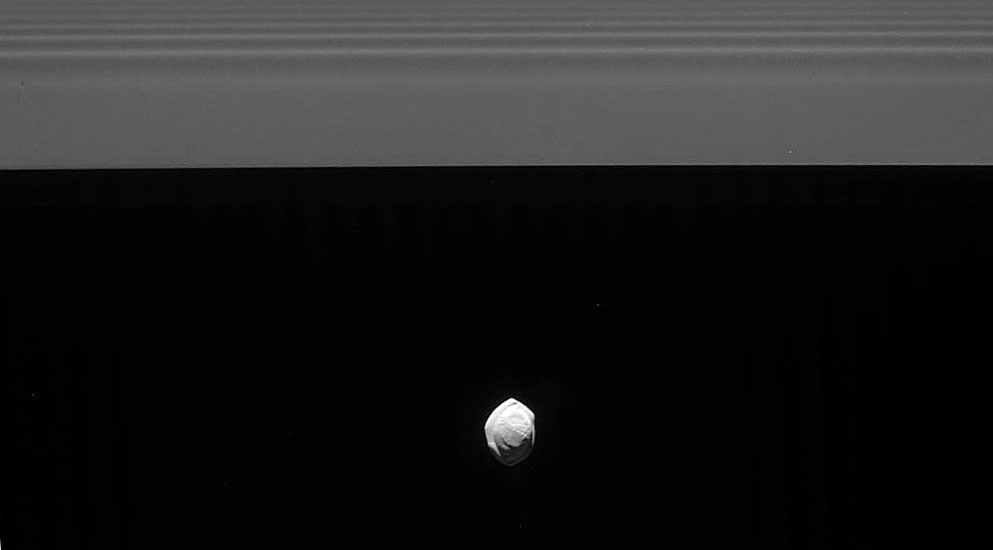
NASA/JPL/Space Science Institute
The two-part structure of the moon is immediately obvious: a core body with a thin, wavy ridge encircling its equator. How does such a bizarre object form in the first place? There’s good reason to believe that Pan was once part of a larger satellite that broke up near Saturn long ago. Much of the material flattened out to form Saturn’s rings while large shards like Pan and another ravioli lookalike, Atlas, orbited within or near the rings, sweeping up ring particles about their middles. Tellingly, the ridges are about as thick as the vertical distances each satellite travels in its orbit about the planet.
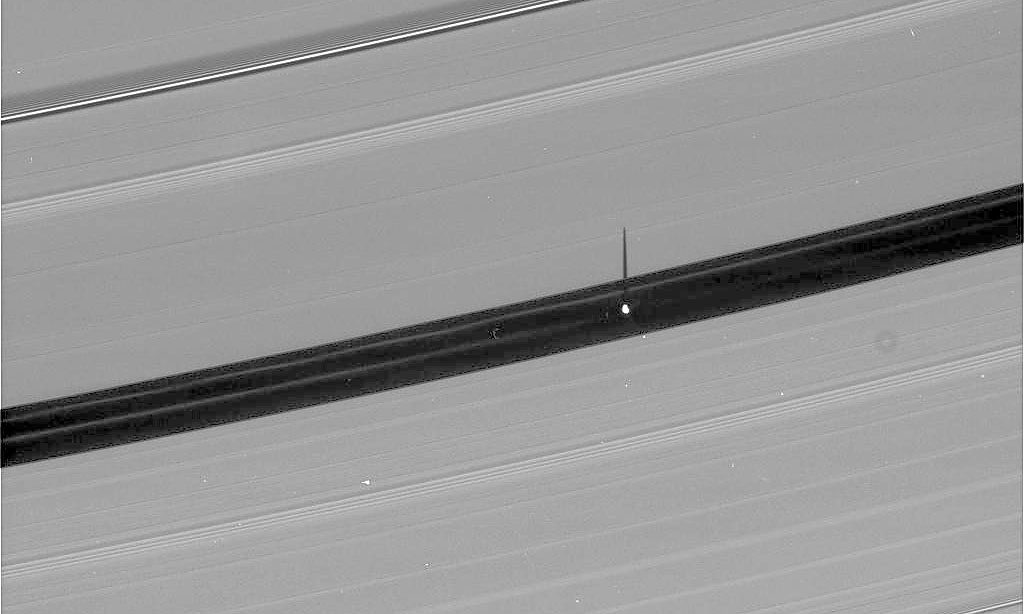
Today, Pan orbits within and clears the narrow Encke Gap in Saturn’s outer A-ring of debris. It also helps create and shape the narrow ringlets that appear in the gap It’s lookalike cousin Atlas orbits just outside the A-ring.
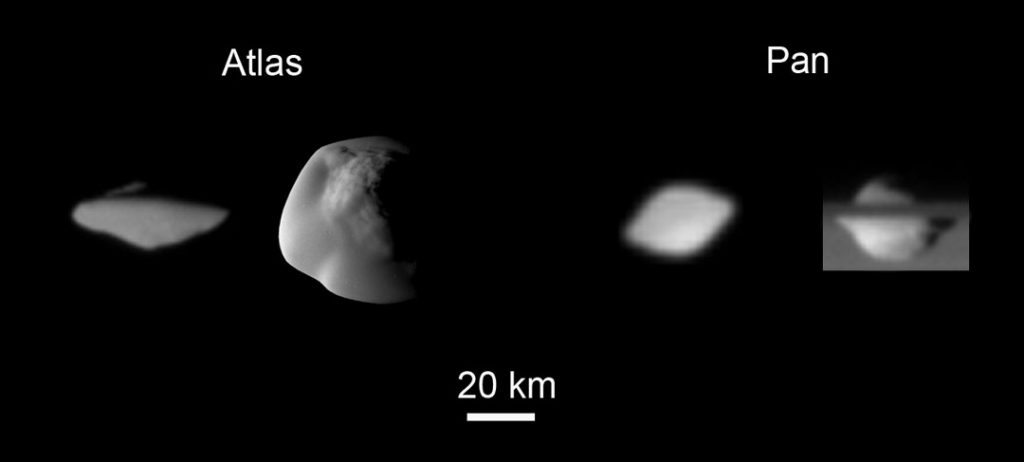
Moons embedded in rings can have profound effects on that material from clearing gaps to creating new temporary ringlets and raising vertical waves of material that rise above and below the ring plane. All these effects are produced by gravity, which gives even small objects like Pan dominion over surprisingly vast regions.

NASA/JPL/Space Science Institute

